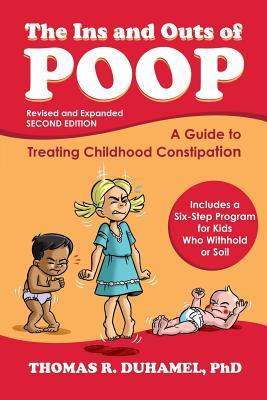Occasional or mild constipation is very common in children. However, more than 20% of children who have occasional constipation go on to develop a more severe type of constipation known as functional constipation or encopresis. Functional constipation occurs when children do not sense the need to defecate. Some of these children accidentally soil in their underwear, which causes them embarrassment. Functional constipation is not a disease but it does cause serious physical and emotional problems which can be prevented by knowing what to do when a child develops occasional constipation. Because functional constipation can persist for months or years, treatment can be stressful for everyone involved, including healthcare providers. To treat functional constipation, parents and providers work together as a treatment team over an extended period of time to manage and resolve the problem. There are six steps required to effectively treat functional constipation: 1. Educate the family 2. Empty the rectum 3. End withholding 4. Shrink the rectum 5. Withdraw laxatives 6. Remain vigilant Each step is explained in detail along with the tools needed for successful implementation, such as forms for data collection and instruction in the use of laxatives and incentives. There are many stories written by parents describing specific aspects of their child's treatment. The book is written in a light-hearted fashion and uses cartoon-like illustrations to highlight key points. It emphasizes the very good news that with comprehensive care, functional constipation can be dramatically improved.

The Ins and Outs of Poop: A Guide to Treating Childhood Constipation
Occasional or mild constipation is very common in children. However, more than 20% of children who have occasional constipation go on to develop a more severe type of constipation known as functional constipation or encopresis. Functional constipation occurs when children do not sense the need to defecate. Some of these children accidentally soil in their underwear, which causes them embarrassment. Functional constipation is not a disease but it does cause serious physical and emotional problems which can be prevented by knowing what to do when a child develops occasional constipation. Because functional constipation can persist for months or years, treatment can be stressful for everyone involved, including healthcare providers. To treat functional constipation, parents and providers work together as a treatment team over an extended period of time to manage and resolve the problem. There are six steps required to effectively treat functional constipation: 1. Educate the family 2. Empty the rectum 3. End withholding 4. Shrink the rectum 5. Withdraw laxatives 6. Remain vigilant Each step is explained in detail along with the tools needed for successful implementation, such as forms for data collection and instruction in the use of laxatives and incentives. There are many stories written by parents describing specific aspects of their child's treatment. The book is written in a light-hearted fashion and uses cartoon-like illustrations to highlight key points. It emphasizes the very good news that with comprehensive care, functional constipation can be dramatically improved.